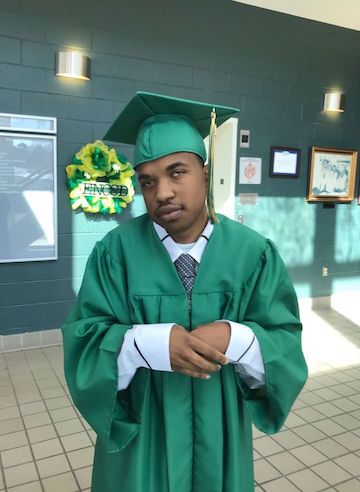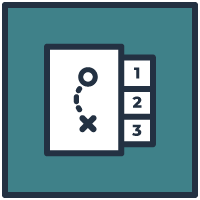Recommendation 4: School and Adult Agency Collaboration
Promote a seamless transition from school to adult life by encouraging schools and adult agencies to work together to provide and fund transition services during high school.

Why This Is Important
The ideal transition from high school to adult life for any student with a disability is one in which the day after high school graduation looks no different from the last day of school, with the student already working and living in his or her community. For students with deaf-blindness who have ongoing, individualized support needs, this means already being served by agencies that will continue to support them in their adult lives.
Studies have found that young adults have a better chance of being employed and other positive post-school outcomes when they and their families are connected to adult service agencies while a student is still in high school and when schools and adult agencies—especially VR and developmental disabilities services—collaborate on their behalf (Advisory Committee on Increasing Competitive Integrated Employment for Individuals with Disabilities, 2016; Luecking & Luecking, 2015; National Collaborative on Workforce and Disability for Youth, 2009).
School and adult services differ markedly. Special education services for students with disabilities are an entitlement, coordinated and funded by schools. Adult services are based on eligibility, not entitlement. As a result, even though a young adult may be eligible for a service, he or she may have to wait quite a while to receive it. Getting connected to appropriate services in a timely manner is critical. It’s easier on families if students are already connected, while still in high school, to services that will support them when they leave.
What State Deaf-Blind Projects Can Do
1. Identify adult agencies in your state that provide services to students with deaf-blindness and additional disabilities once they graduate from high school.
These services are likely to include developmental disabilities, VR, blind and low vision, and possibly mental health. Developmental disabilities and mental health programs usually provide funding to support people to work, live, and participate in their communities. VR and blind and low vision services may be one agency or two separate agencies. They provide funding for people with disabilities to receive training, obtain and maintain work, and access the technology they need to do their jobs. VR funding tends to be time limited, while developmental disabilities and mental health funding may provide services long term.
2. Identify existing efforts—or promote efforts—in your state regarding school-adult agency collaboration.
Check with local VR services and other adult service agencies to ask if they have counselors, job coaches, or job developers embedded at schools or assigned to provide services to high school students. Call your regional, county, or state developmental disabilities office and ask if they provide: (a) funding to schools to support early work experiences and enhanced transition planning and (b) outreach to inform students and their families about community employment and living.
Resources:
- Interagency Agreement Toolkit (some resources at this site require that you register for a free account)
- A Guide to Developing Collaborative School-Community-Business Partnerships (some resources at this site require that you register for a free account)
3. Educate yourself—and share with families—information about alternatives to publicly-funded programs.
These include Achieving Better Life Experience (ABLE) accounts; Social Security Work Incentives such as PASS Plans and Impairment-Related Work Expenses (IRWE); Achieving Better Life Experience (ABLE) accounts; and non-disability supports such as low-income housing and first time home buyers’ incentives.
Promising Examples
King County Developmental Disabilities Division
In Washington, long-term funding is prioritized to support community employment over employment in sheltered settings or non-work activities. Several school districts have school-to-work programs co-funded by the King County Developmental Disabilities Division (KCDDD). The services, which cost $800 per month per student, pay for a local employment agency to provide employment services that augment transition and employment preparation programs already provided by schools.
Services occur during the last year or two of high school and may include: assessment, person-centered planning, discovery, setting up individual community-based work experiences, and on-the-job training. Placement in a paid community job prior to the student exiting school is the expected outcome. The state’s Division of Vocational Rehabilitation incentivizes KCDDD with a payment of $8,670 for each student who has been placed in a job and worked for at least 90 days. Ideally this occurs before the student has exited school. In 2016, King County had 144 students in the school-to-work program; 100 were placed in employment by the time they exited high school.
Transition Service Integration Model
Several transition projects have demonstrated the effectiveness of providing services and funding in collaboration with adult agencies. The Transition Service Integration Model, piloted in Maryland and California, encouraged schools to subcontract with community rehabilitation programs that were vendors for developmental disabilities and vocational rehabilitation services to provide community work experiences and employment. In addition to these agencies being the entities that serve student long term, the community rehabilitation programs are typically more adept at working with employers and developing jobs than many school staff. Students left these programs and school already working and connected to the adult agencies that would provide their long-term support (Luecking & Luecking, 2015).
